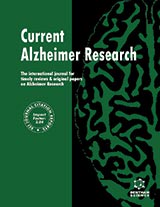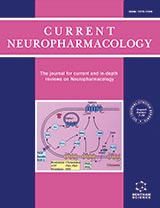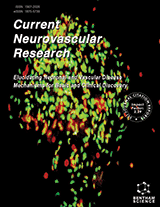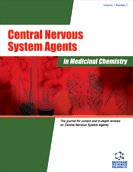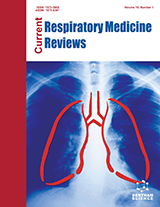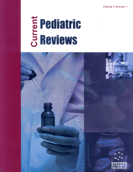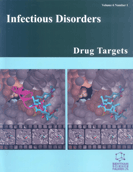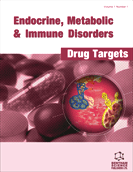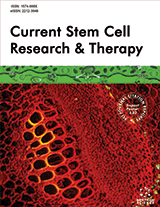摘要
背景:自20世纪90年代以来,阿尔茨海默病(AD)免疫治疗的研究已越来越受到重视,但关于免疫治疗的应用存在着利(预防AD)和弊(产生的成本和副作用)。迄今为止,还缺乏对免疫治疗的经济评估。我们的目的是评估AD疫苗接种的成本效益分析。方法:系统回顾随机对照试验后进行元分析,以评估疫苗的功效。构建马尔可夫的决策模型,应用到超过65岁的120000位台湾人群。接种组和未接种组计算人年和质量调整生命年(QALY)。进行经济评价,计算增量成本效益比(ICER)和成本效益可接受性曲线(CEAC)。结果:10年以后随访,接种组获得了额外的0.84生命年和0.56的QALY,5年以后随访,接种组获得了额外的0.35生命年和0.282的QALY。5年随访,接种组ICER超过未接种组。10年随访,与未接种组对比,接种组ICER是每个QALY 花费13850美元和获得每个生命年花费9038美元。鉴于20000美元的支付意愿(WTP)的临界值,CEAC显示了疫苗接种的成本效益的可能性,即随访10年后QALY是70.7%和获得92%生命年。5年随访后,相应的数字分别为87.3%和93.5%。结论:与不接种相比,AD的疫苗接种获得QALY和生命年,其成本效益在合理的WTP阈值之下。
关键词: 阿尔茨海默病,成本效益分析,免疫治疗,元分析,疫苗接种。
Current Alzheimer Research
Title:Probabilistic Cost-Effectiveness Analysis of Vaccination for Mild or Moderate Alzheimer’s Disease
Volume: 13 Issue: 7
Author(s): Kuen-Cheh Yang, Hsiu-Hsi Chen
Affiliation:
关键词: 阿尔茨海默病,成本效益分析,免疫治疗,元分析,疫苗接种。
摘要: Background: Studies on the immunotherapy for Alzheimer’s disease (AD) have increasingly gained attention since 1990s. However, there are pros (preventing of AD) and cons (incurred cost and side effects) regarding the administration of immunotherapy. Up to date, there has been lacking of economic evaluation for immunotherapy of AD. We aimed to assess the cost-effectiveness analysis of the vaccination for AD. Methods: A meta-analysis of randomized control trials after systemic review was conducted to evaluate the efficacy of the vaccine. A Markov decision model was constructed and applied to a 120,000-Taiwanese cohort aged ≥65 years. Person years and quality-adjusted life years (QALY) were computed between the vaccinated group and the the unvaccinated group. Economic evaluation was performed to calculate the incremental cost-effectiveness ratio (ICER) and cost-effectiveness acceptability curve (CEAC). Results: Vaccinated group gained an additional 0.84 life years and 0.56 QALYs over 10-years and an additional 0.35 life years and 0.282 QALYs over 5-years of follow-up. The vaccinated group dominated the unvaccinated group by ICER over 5-years of follow-up. The ICERs of 10-year follow-up for the vaccinated group against the unvaccinated group were $13,850 per QALY and $9,038 per life year gained. Given the threshold of $20,000 of willingness to pay (WTP), the CEAC showed the probability of being cost-effective for vaccination with QALY was 70.7% and 92% for life years gained after 10-years of follow-up. The corresponding figures were 87.3% for QALY and 93.5% for life years gained over 5-years follow-up. Conclusion: The vaccination for AD was cost-effective in gaining QALY and life years compared with no vaccination, under the condition of a reasonable threshold of WTP.
Export Options
About this article
Cite this article as:
Kuen-Cheh Yang, Hsiu-Hsi Chen , Probabilistic Cost-Effectiveness Analysis of Vaccination for Mild or Moderate Alzheimer’s Disease, Current Alzheimer Research 2016; 13 (7) . https://dx.doi.org/10.2174/1567205013666160129095012
| DOI https://dx.doi.org/10.2174/1567205013666160129095012 |
Print ISSN 1567-2050 |
| Publisher Name Bentham Science Publisher |
Online ISSN 1875-5828 |
 42
42 2
2 2
2
- Author Guidelines
- Bentham Author Support Services (BASS)
- Graphical Abstracts
- Fabricating and Stating False Information
- Research Misconduct
- Post Publication Discussions and Corrections
- Publishing Ethics and Rectitude
- Increase Visibility of Your Article
- Archiving Policies
- Peer Review Workflow
- Order Your Article Before Print
- Promote Your Article
- Manuscript Transfer Facility
- Editorial Policies
- Allegations from Whistleblowers
- Announcements
Related Articles
-
Neurocysticercosis: The Enigmatic Disease
Central Nervous System Agents in Medicinal Chemistry Inactivation of Pathogenic Microorganisms by Photodynamic Techniques:Mechanistic Aspects and Perspective Applications.
Anti-Infective Agents in Medicinal Chemistry The Amyloid β-Protein Precursor and Alzheimers Disease. Therapeutic Approaches
Current Medicinal Chemistry - Central Nervous System Agents Retroperitoneal Cryptococcoma in a Case of Disseminated Cryptococcosis on Antifungal Maintenance Therapy
Current HIV Research Kawasakis Disease, Acrodynia, and Mercury
Current Medicinal Chemistry Central Nervous System Disorders Associated to Immune Checkpoint Inhibitors
Current Cancer Therapy Reviews New Proposals for Treatment Sporadic Alzheimers Disease
Central Nervous System Agents in Medicinal Chemistry Borna Disease Virus (BDV): Neuropharmacological Effects of a CNS Viral Infection
Current Neuropharmacology Anti-Inflammatory Drugs in Psychiatry
Inflammation & Allergy - Drug Targets (Discontinued) Immunotherapy for Alzheimers Disease: Potential Problems and Possible Solutions
Current Immunology Reviews (Discontinued) The Effects of Soluble Aβ Oligomers on Neurodegeneration in Alzheimer's Disease
Current Pharmaceutical Design Proteomics Approaches to Understand Linkage Between Alzheimer’s Disease and Type 2 Diabetes Mellitus
CNS & Neurological Disorders - Drug Targets Long-Term Follow-Up of Patients Immunized with AN1792: Reduced Functional Decline in Antibody Responders
Current Alzheimer Research Therapeutic Modulation of Cytokines in Chronic Infectious Diseases
Current Pharmaceutical Design Processing of Amyloid Precursor Protein as a Biochemical Link Between Atherosclerosis and Alzheimers Disease
Cardiovascular & Hematological Disorders-Drug Targets The Usefulness and Challenges of Transgenic Mouse Models in the Study of Alzheimers Disease
CNS & Neurological Disorders - Drug Targets Clinical Presentations and Diagnosis of Brucellosis
Recent Patents on Anti-Infective Drug Discovery Currently Used Biologic Agents in the Management of Behcet’s Syndrome
Current Medicinal Chemistry Management of Idiopathic Intracranial Hypertension During the COVID-19 Pandemic
Reviews on Recent Clinical Trials Pharmacokinetics of Antifungal Agents in Neonates and Young Infants
Current Medicinal Chemistry


